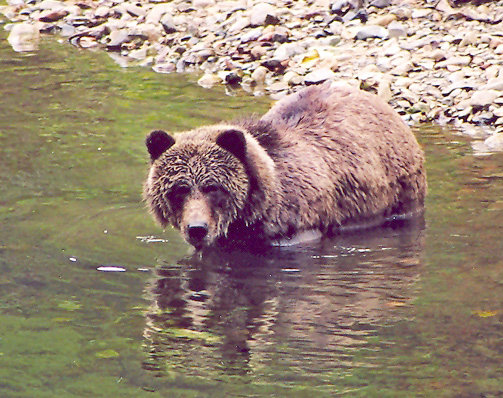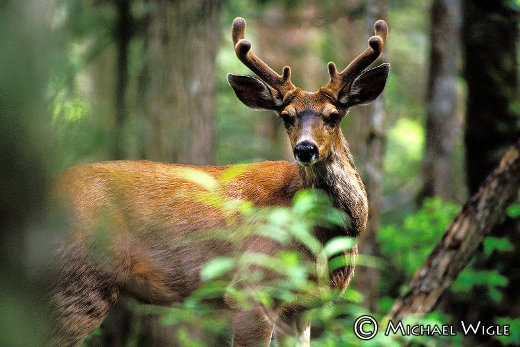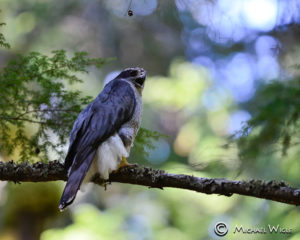The care of fish and wildlife is a fundamental management principle and on the Community Forest, this is done by managing forest habitat at both the landscape and site specific levels. The forests surrounding Bella Coola contain many different fish and wildlife species and to make sure that there is enough habitat available for them to thrive, the strategy is to focus on the maintenance of adequate habitat for ‘keystone’ species like grizzly bears, deer and salmon. By ensuring there is enough habitat to sustain the keystone species, it is expected that the requirements of all the other species will also be maintained. At the landscape level, this means establishing a network of Wildlife Habitat Areas (WHA), Ungulate Winter Ranges (UWR), riparian reserves and maintaining at least minimum levels of old forest. At the harvest block level, site specific measures are taken to ensure maintenance of water quality, wildlife tree retention, forest influence and structural diversity.
A network of legally WHA’s, UWR’s and riparian reserves has been designated for the following keystone species on the community forest:

Grizzly Bears
Grizzly bears roam throughout Bella Coola valley and the community forest. In terms of habitat requirements, the key elements are feeding areas and escape cover, which means protecting salmon streams, forested berry sites on rich valley bottoms and forest cover next to brushy avalanche tracts. Bears are omnivores that are opportunistic feeders that rely on virtually the whole lanbase, from berries in the alpine, to herbaceous plants in avalanche tracts, to grubs and insect colonies in the forest, to berries in cutovers, to skunk cabbage on wet valley bottom swamps to the all important salmon feast along the main rivers in the fall.

Black Tailed Deer
Deer are also found throughout the Bella Coola valley and the community forest. The main limiting habitat requirement for deer is availability of protective winter range areas. These forested areas are typically on south facing slopes, at low to mid elevation levels and extensive mature forest cover. These forest attributes provide snow interception during winter months, allowing deer to escape predators and also to access vegetation and lichen fallen from tree tops to browse on.

Mountain Goats
Mountain goats are at home on the lofty peaks and steep cliffs all around the Bella Coola valley. Similar to deer, the critical habitat requirement for mountain goats is also winter range. However, unlike deer, mountain goats prefer winter habitat that is a mix of steep cliffs and mature forest. The forest provides the cover similar to deer winter range, but the cliffs provide escape routes where mountain goats can get away from predators like mountain lions and wolf.

Northern Goshawk
The northern goshawk is a raven sized bird of prey that is primarily found in forested areas. They feed on small birds and mammals found within the forest. The critical habitat requirement is adequate nesting habitat which requires mature forest with a dense canopy and inner forest conditions. This means that the forest stand is large enough that there is no forest edge influence. These kinds of forest protect the nests from larger raptors, like bald eagles, that can not fly in a dense canopy forest.

Other keystone species that are managed for on the community forest are tailed frogs and marbled murrellets. Tailed frogs are unique in that they remain in the tadpole stage in streams for 2-4 years. Tailed frog habitat is typically maintained through riparian protection of upland streams. Marbled murrelets are usually found out in the ocean but it is one of the few seagoing birds that nest in the forest and it requires large branch pads with thick moss to build their nests. In most cases, there is adequate nesting habitat in forests outside the Timber Harvesting Land Base.



